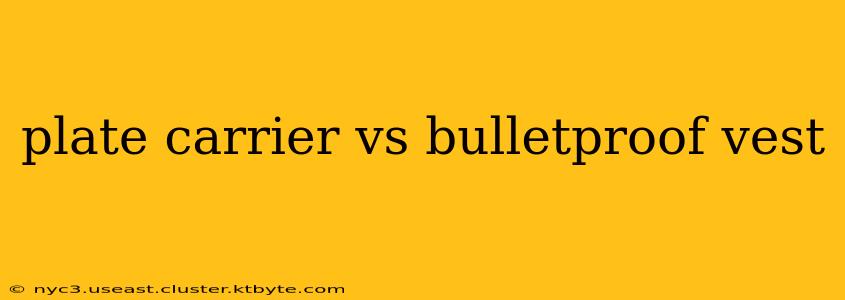Choosing between a plate carrier and a bulletproof vest depends heavily on your needs and intended use. While both offer ballistic protection, they differ significantly in design, functionality, and the level of protection they provide. This detailed comparison will clarify the distinctions and help you make an informed decision.
What is a Bulletproof Vest?
A bulletproof vest, also known as body armor, is designed to absorb and deflect projectiles, primarily handgun rounds. These vests typically consist of layers of ballistic material, such as Kevlar or other high-strength fibers, sewn together to create a flexible garment that's worn directly against the body. Soft body armor is the common term for this type of vest. It's lightweight and concealable, making it suitable for everyday carry by law enforcement officers or security personnel. However, its protection is limited and may not stop rifle rounds.
Advantages of Bulletproof Vests:
- Concealability: Soft body armor is designed for discreet wear under clothing.
- Lightweight and comfortable: Compared to plate carriers, they are significantly lighter and less restrictive.
- Cost-effective: Generally, soft body armor is less expensive than plate carriers with hard armor plates.
Disadvantages of Bulletproof Vests:
- Limited protection: Primarily protects against handgun rounds and fragments; offers minimal to no protection against rifle rounds.
- Less durable: Repeated impacts or exposure to harsh conditions can degrade the effectiveness of the ballistic material.
- Restricted movement: While more comfortable than plate carriers, the layered material can still somewhat restrict movement.
What is a Plate Carrier?
A plate carrier is a tactical vest designed to hold hard armor plates, providing significantly higher protection than soft body armor. These plates are typically made of ceramic, steel, or polyethylene materials and are designed to stop rifle rounds. The plate carrier itself is a lightweight and adjustable vest, providing a system for carrying these plates strategically positioned to protect vital organs. They are favored by military personnel, law enforcement SWAT teams, and civilians engaged in high-risk activities.
Advantages of Plate Carriers:
- Superior protection: Offers significantly higher protection against rifle rounds and high-velocity threats.
- Modular design: Allows for customization with additional pouches, accessories, and different plate configurations.
- Durable: Plate carriers are generally more robust and designed to withstand harsh conditions.
Disadvantages of Plate Carriers:
- Less concealable: The hard plates and bulkier design make concealment challenging.
- Heavier and less comfortable: The weight of the plates and carrier can be restrictive and uncomfortable, especially during prolonged wear.
- Higher cost: Plate carriers and ballistic plates are more expensive than soft body armor alone.
Plate Carrier vs. Bulletproof Vest: A Direct Comparison
| Feature | Bulletproof Vest (Soft Armor) | Plate Carrier (Hard Armor) |
|---|---|---|
| Protection Level | Handgun rounds, fragments | Rifle rounds, high-velocity threats |
| Material | Kevlar, other high-strength fibers | Ceramic, steel, polyethylene plates |
| Weight | Lightweight | Heavier |
| Concealability | High | Low |
| Comfort | Relatively comfortable | Less comfortable |
| Cost | Lower | Higher |
| Durability | Less durable | More durable |
| Modular Options | Limited | Highly modular |
Conclusion: Choosing the Right Protection
The best choice between a plate carrier and a bulletproof vest depends entirely on your specific needs and the level of threat you anticipate. If you require protection against handgun rounds and prioritize concealability and comfort, a bulletproof vest is a suitable option. However, if you face a higher threat level requiring protection against rifle fire, a plate carrier with hard armor plates is necessary. Consider consulting with a ballistic protection specialist to determine the appropriate level of protection for your situation. Remember, personal safety is paramount; choose the gear that best meets your individual risk assessment.

